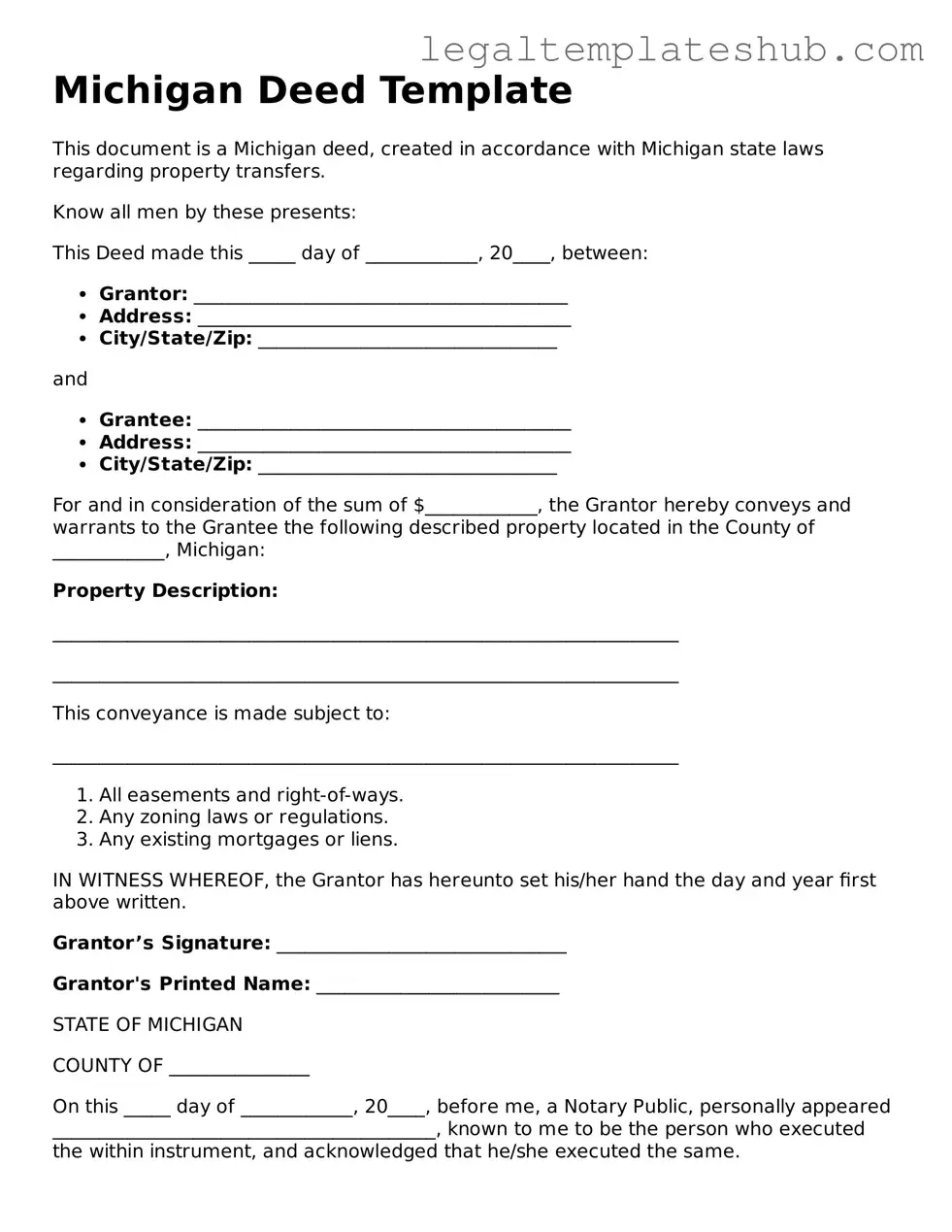Printable Deed Document for Michigan
A Michigan Deed form is a legal document used to transfer ownership of real estate from one party to another. This form outlines essential details such as the names of the parties involved, a description of the property, and any conditions of the transfer. To ensure a smooth transaction, it is important to complete the form accurately and thoroughly.
Ready to transfer property ownership? Fill out the Michigan Deed form by clicking the button below.
Access Editor
